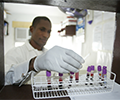Tag Archives: surgery
May 2025 Br J Cardiol 2025;32:45–6 doi:10.5837/bjc.2025.020
Advances in aortic surgery
Ishtiaq Ali Rahman, Shakil Farid, Ravi De Silva

Discussion Acute type A aortic dissection (ATAAD) represents a life-threatening condition requiring urgent surgical intervention. Management strategy is determined by the location of the intimal tear, which may involve the root, ascending aorta, or arch. The Stanford classification (A and B) has been extended by the TEM system adding ‘non-A and non-B’ (Type), location of primary entry tear (E) and malperfusion (M).10 In aortic root dissection and aneurysmal dilatation syndromes, valve-sparing root reconstruction has emerged as a safe and effective alternative to traditional root replacement using valved conduit (Bentall procedure). The a
June 2021 Br J Cardiol 2021;28:67–9 doi:10.5837/bjc.2021.026
Reducing antithrombotic-related bleeding risk in urgent and emergency cardiac surgery
Amer Harky, Abdul Badran

Introduction Bleeding post cardiac surgery carries significant patient mortality and morbidity including resternotomy, increased hospital stays, and blood product transfusion.1,2 Bleeding is more severe in patients who are taking pre-operative antiplatelet or anticoagulation medications that have not been stopped sufficiently in advance to minimise such risks. Current guidelines across Europe recommend stopping such agents at least two to five days prior to surgery; they also recommend delaying urgent surgery so that the risk of perioperative bleeding is minimised.3 However, this is not always possible in the setting of urgent and emergency c

October 2018 Br J Cardiol 2018;25:147–9 doi:10.5837/bjc.2018.026
Transitions of an open-heart surgery support lab in a resource-limited setting: effect on turnaround time
Ijeoma Angela Meka, Williams Uchenna Agu, Martha Chidinma Ndubuisi, Chinenye Frances Onyemeh

Introduction Open-heart surgery is gradually gaining recognition in Nigeria following the first open-heart surgery carried out at the University of Nigeria Teaching Hospital (UNTH), Enugu in 1974.1 For a long time, UNTH remained the only centre in Nigeria carrying out open-heart surgery.2 However, more patients requiring these surgeries are now being operated on with the emergence of new cardiac centres.3 Open-heart surgery is a major surgical procedure that requires intensive monitoring pre-operatively, intra-operatively and postoperatively. It, thus, requires team work with various professionals. Laboratory personnel form an essential arm
August 2017 Br J Cardiol 2017;24:120 doi:10.5837/bjc.2017.024
Multiple left atrial masses in a patient with breast cancer
Debjit Chatterjee

Case A 63-year-old woman presented with breathlessness for a week. She had had a right mastectomy and axillary node clearance three weeks previously for breast cancer. She was known to have rheumatic heart disease and mitral stenosis with history of balloon mitral valvuloplasty 12 years ago. An echocardiogram, which was performed four months before, showed moderate mitral stenosis with valve area of 1.2 cm2, moderate aortic stenosis with peak gradient across aortic valve of 42 mmHg and mean of 22 mmHg and mild tricuspid regurgitation with normal pulmonary artery pressure. She was also known to have permanent atrial fibrillation and was on w
August 2012 Br J Cardiol 2012;19:107–10
New data reassures on bleeding risk with dabigatran in surgery patients
BJCardio Staff

The study, published in Circulation on June 14 (Circulation 2012; 126:343–8. http://dx.doi.org/10.1161/CIRCULATIONAHA.111.090464), reported bleeding rates in RE-LY from seven days before until 30 days following invasive procedures in a total of 4,591 patients. Procedures included pacemaker/defibrillator insertion, dental procedures, diagnostic procedures, cataract removal, colonoscopy, and joint replacement. Among patients assigned to dabigatran, the last dose of study drug was given an average of 49 hours prior to the procedure, compared with 114 hours in patients receiving warfarin. Bridging anticoagulation with heparin was given in 28%
March 2012 Br J Cardiol 2012;19:15
Correspondence: Specialty training
Nigel Tapiwa Mabvuure and David Ross McGowan

Inspiring the next generation of cardiac specialists: learning from the British Association of Plastic, Reconstructive and Aesthetic Surgeons undergraduate course Dear Sirs, Medical and surgical cardiology are among the most competitive specialties to enter. In 2010, there were 6.0 applicants for every specialty training (ST3) post for cardiothoracic surgery1 and 5.7 for cardiology.2 Bearing in mind that these competition ratios represent the competitiveness after the longlisting and shortlisting stages, they represent intense competition for admission into these specialty programmes. The changes brought in by the modernising medical careers
November 2004 Br J Cardiol 2004;11:462-66
Delusional memories following cardiac surgery and prolonged intensive care: a retrospective survey and case note review
Jonathan MT Pierce, Oliver Allenby-Smith, Jonathan Goddard

No content available

